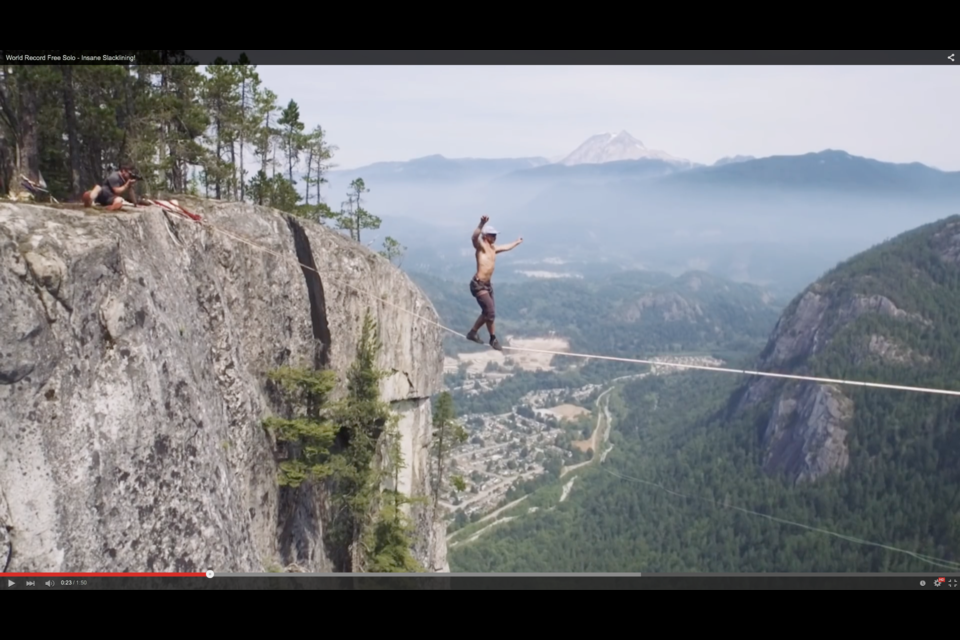After Spencer Seabrooke balanced his way along a slackline perched across a 305-metre gully at the top of the Stawamus Chief, he had a nagging fear in the back of his mind.
“We are riding a fine line,” the new free solo world record holder said. “I have actually been talking with one of the BC Parks supervisors. I am really trying to open up the dialogue, set some guidelines so we can continue to use these parks.”
Over the years, the Stawamus Chief Provincial Park has become a Mecca for extreme sports. Free solo climbers – climbing without ropes – have scaled its rock walls. Base jumpers plummet down the face of its 702-metre drop and paragliders and speedflyers take to the air off its top. It’s also a popular spot for Seabrooke’s passion of highlining, a form of slackline done over vast drops.
Last weekend he helped organize an international highline gathering at the Chief, setting up various highlines for athletes to try with safety equipment. BC Parks did not grant the event a permit. While the function was able to continue, without a permit Seabrooke couldn’t bring in corporate sponsors.
Extremely high-risk activities are not supported nor promoted by BC Parks, but they are not barred either, the Ministry of Environment stated in an email to The Squamish Chief.
“In general, BC Parks’ preference is not to ban activities that can occur without disturbing the ecological values that are present and without impacting the enjoyment of other visitors,” the ministry noted.
These sports require an incredible amount of physical skill, as well as technical knowledge, and even then there is considerable risk to personal safety, the ministry noted. When accidents occur, the consequences are serious, the governing body continued. Last month, a 40-year-old Squamish resident died in a speed
flying accident, marking the second speed flying death in the provincial park since 2013. Last December, Squamish Search and Rescue hauled a stranded speedflyer off a ledge below the Stawamus Chief’s third peak.
“We ask that when people pursue allowable recreational activities in provincial parks that they use their own good judgment to ensure they minimize risk to their personal safety and the safety of others,” the ministry stated.
The provincial government has no current plans to implement a ban, but dealing with extreme sports in its parks is an issue it may revisit, the ministry stated.
Seabrooke said he hopes the ministry maintains its current position. The United States is an example of hard-line laws backfiring, he said.
“There are people who have died there trying to lose the rangers,” he says, noting the country’s ban on extreme sports in parks.
Many people have been injured hiking the Stawamus Chief, Seabrooke adds. In 2013, a 57-year-old woman died after falling off the monolith. Yet it doesn’t make sense to close these spaces to everyone, just as it doesn’t make sense to close them off to extreme athletes, he said.
“We understand the risks we are taking.”



